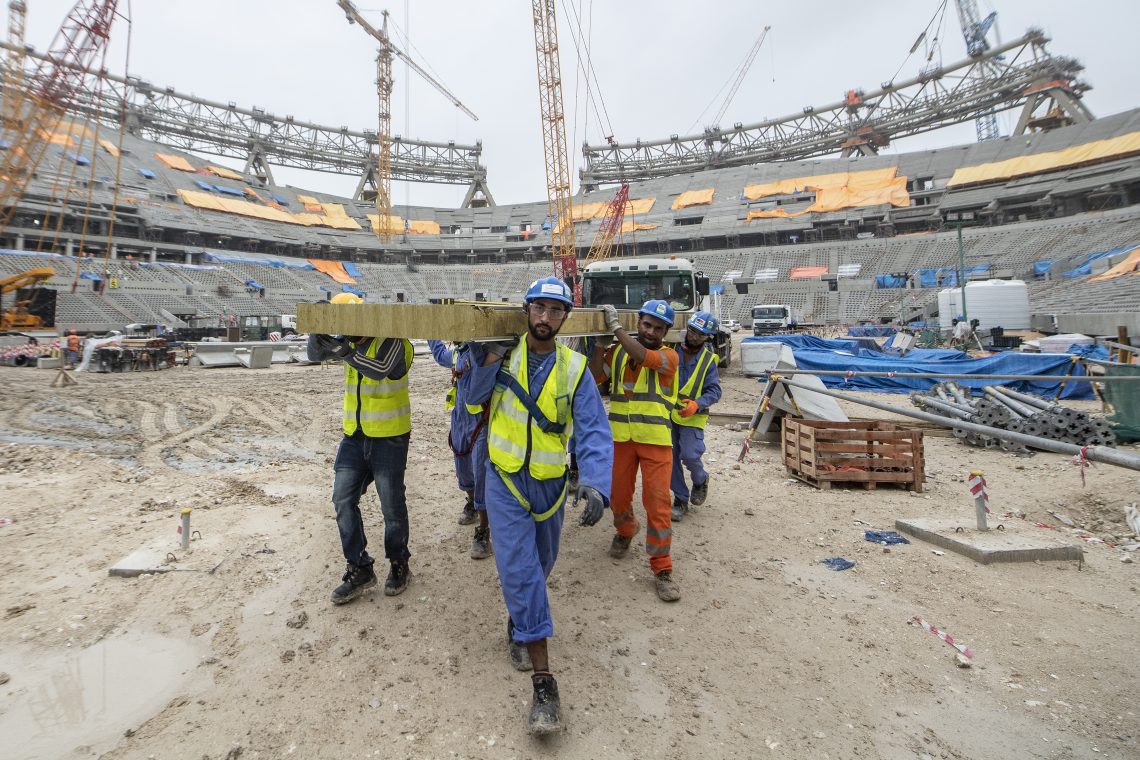The trouble with megaprojects
Ill-advised government megaprojects are as old as time. Saudi Arabia’s ambitious plans for the Neom smart city may bring economic and political headaches.

In a nutshell
- Grand governmental designs often end up expensive failures
- The damage from capital misallocation can be slow-burning
- Saudi Arabia’s smart city ambitions will come at significant cost
Ambitious architectural, infrastructure and engineering megaprojects are nothing new. Rulers and governments of all kinds have long relied on them to project strength, to increase their appeal to the public and to attract trade and foreign visitors. Some of those structures have survived for centuries or millennia, still managing to fulfill these functions. The Colosseum, the Parthenon, the Egyptian pyramids: virtually all of the ancient wonders of the world, and many of the modern ones, could have been described as vanity projects, at least before they came to be recognized as feats of human civilization and creativity.
More recent projects have also added value, whether economic, aesthetic or functional, to the cities and populations that surround them. Consider the Gotthard Tunnel in Switzerland, or the impressive Panama Canal, rendered even more impressive by its recent expansion. Even the International Space Station (ISS) – still the most expensive structure in the world, built at the cost of $150 billion – has delivered the intended results.
These successes, however, are exceptions to a very unfortunate rule: megastructures tend to turn out to be mega-failures. Inevitable cost and time overruns, combined with unpredictable external developments, often leave initial targets unmet by the time of completion. In some cases, governments and politicians (almost comically) overpromise and underdeliver, as it is the “vision” of the project, not the execution, that matters to their personal political gain. The result, unveiled only years after the end of their tenures, is someone else’s concern.
The successes are exceptions to a very unfortunate rule: megastructures tend to turn out to be mega-failures.
Accordingly, there are some obvious “duds” – projects that proved to be nothing more than a waste of time, human labor and money. As any country that has hosted the Olympics can testify, stadiums and facilities may be used once and then left to crumble. There is an abundance of other poorly thought-out examples, the Yucca Mountain nuclear waste repository in the United States to failed city-building projects like Myanmar’s Naypyidaw, which still looks like a ghost town 17 years after its completion.
There is a basic criticism that faces most megaprojects, ancient or contemporary, paid for with public funds: the individual taxpayer usually has not asked for it. Even if it ends up a resounding success, any citizen forced to contribute to a project’s construction still has the right to argue that it was a waste of their resources. We might be enchanted today by the architectural marvel of the Acropolis or the massive amphitheaters that one stumbles upon when visiting Greece. But it’s not hard to understand the grievances of a poor, ordinary ancient Athenian who would rather have some extra food – or better yet, his money back.
When megaprojects fail
Still, one can distinguish between the success of different large-scale projects, especially in modern times. There is certainly some correlation between the motives behind a given megaproject and its fate. For instance, structures with a well-defined, practical and focused purpose tend to fare better than the alternatives. These often include science- or energy-oriented infrastructure projects, from dams and nuclear plants to the Large Hadron Collider or the aforementioned ISS.
On the contrary, the most ambitious “visions” – typically of the utopian kind – are often doomed to fail. These usually involve grand designs, based on unrealistic or impractical assumptions and a good dose of wishful thinking. Their primary purpose is to display a state’s strength, flaunt its wealth, or convince the rest of the world of its technological prowess. In some cases, they resemble the concept cars displayed by automotive companies at conventions. They are not so much a blueprint for an actual car, but a statement to competitors and the public: “Look what we could build if we wanted to.”
Read more on infrastructure
The Suez Canal privatization conundrum
Even when “concept” megastructures are actually completed – and even if they look more or less like the pictures in the prospectus – they can still disappoint. That was arguably the case with the 2022 World Cup held in Qatar, for which the country spent more than $200 billion during a 12-year construction scheme. The gargantuan project employed hundreds of thousands of migrant workers, who labored under harsh, widely criticized conditions. The result was eight spectacular stadiums for a tiny nation that has little further use for them, along with an entirely new city in Lusail.
Most of the new infrastructure was expected to be repurposed or dismantled and recycled, both options seeming somewhat cumbersome and completely inefficient. Qatar and FIFA also made bold environmental promises before the Word Cup that have not been met, according to a recent report by the Swiss Fairness Commission, an advertising and communications regulator.
Neom: The Saudi smart city
Saudi Arabia’s planned “smart city” of Neom is a core element of the country’s Vision 2030 plan, and the brainchild of its de facto leader, Crown Prince Mohammed bin Salman (often known as MbS). Named using a portmanteau of the Greek word for “new” and the Arabic word for “future,” the project has been promoted as part of an effort to diversify from a dependence on oil. It is designed to include a combination of ultra-futuristic structures in an area the size of Belgium, at the northern end of the Saudi Red Sea coastline.
The city’s centerpiece is a 170-kilometer-long sideways “skyscraper,” known as The Line, that will be the focal point of residential and tourist activities. It will have no cars, no roadways and no carbon emissions. Promotional materials say it will provide 380,000 jobs by 2030, powered entirely by renewable energy, and leave “95 percent of the land” preserved. “People’s health and well-being will be prioritized over transportation and infrastructure, unlike traditional cities,” the website claims. The Oxagon is meant to serve as the “industrial hub” of Neom, promising to be the “world’s largest floating structure with an automated port, smart supply chain network and innovation hubs.”
For a project that claims to prioritize preservation and environmental concerns, a floating megastructure is a strange choice. Major industrial activities involving chemicals and other kinds of pollution (both planned and accidental), as well as dramatic changes to the natural habitat of marine species, can hardly pass a green test. Questions also arise around the project’s practical implementation. The untested Oxagon concept will surely run into unforeseen challenges, including structural integrity, stability and other technical issues. If these are not impossible to overcome, they will at least require a massive expenditure of money and resources.

The Line, too, faces serious problems. It will require the displacement of some 20,000 members of the local Huwaitat tribe, which traces its roots back to before the founding of the Saudi state. Construction will also involve the intense use of manual labor; human rights advocates have already raised serious concerns about working conditions and the alleged exploitation of migrant workers. And the most obvious challenge: Not only does building Neom require record investments and unprecedented degrees of engineering, administrative and architectural execution, but all of it must be done in the middle of the desert.
More interesting than the “how” is the “why.” Even assuming that these practical problems could somehow be solved, the real question is why anyone would want to solve them in the first place. What other reason could there be, if not vanity? Granted, a sense of curiosity and the desire to showcase the limits of human creativity and ingenuity could be understandable impulses. We might even concede that a genuine belief that the public could actually reap some benefit, at some point, is largely though not entirely inconceivable.
But why spend all these resources and insist on malinvestment on this scale, when all these funds, effort and talent could be directed at ventures that might appear less impressive, but could benefit the people of the country and the entire region much more directly, effectively, and sooner? After all, building a French embassy on the Moon might also be technically possible, and would probably make the French proud, but it is certainly not financially prudent nor practically sensible.
Scenarios
Barring major geopolitical events like a regional war, the next decade will likely bring great prosperity to Saudi Arabia. Serious domestic opposition to the regime is unlikely to emerge, as so much money being invested in the country will raise the general standard of living. At the same time, the harmful effects of capital misallocation will not yet be truly visible.
Even after the Vision 2030 “deadline” comes and goes, the country may still be able to mask any cracks that appear through further investments. That is hardly a sustainable strategy, however. At some point, there will be a price to pay for all the wasteful and inefficient ventures, and it will be one that the Saudi economy will be unable to afford. But abandoning these projects will also be politically untenable. Eventually, we could see a slide in the standard of living and rising public discontent, with serious social and political consequences.
Another scenario would be that these megastructures are never actually completed. The practical and technical challenges could be too difficult to overcome, the obstacles that are already obvious could multiply as work progresses on the ground, and foreign investment could begin to dry up. This may well cause political problems domestically, but economically, it might prove the lesser of two evils.










